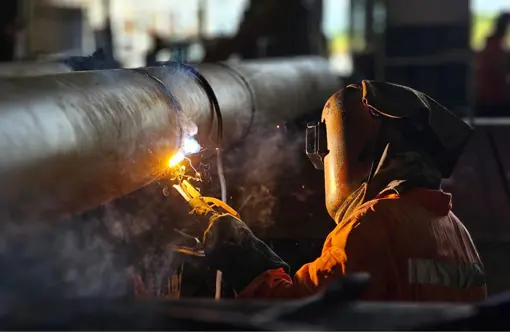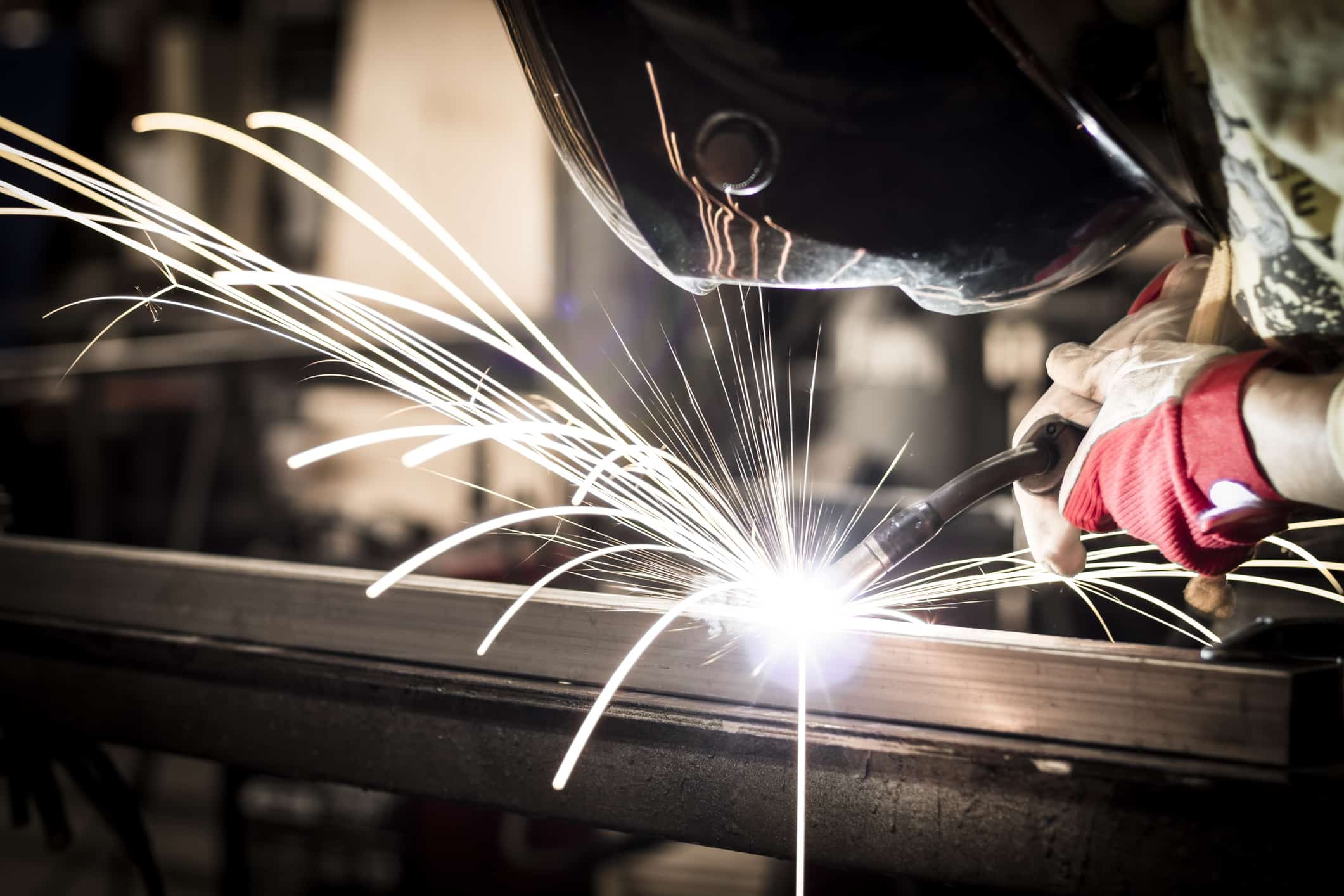All About Welding: Key Insights Into Techniques and Finest Practices for Success
Welding includes a variety of techniques, each fit for particular products and applications. Comprehending these techniques, such as GMAW, SMAW, and TIG, is necessary for attaining suitable outcomes. Additionally, the appropriate tools and security methods can not be neglected. As preparation and troubleshooting play crucial roles in the welding procedure, understanding these components can substantially boost the high quality of the final item. What are the essential aspects that ensure a successful weld?
Recognizing Various Welding Techniques
Welding methods encompass a selection of methods, each fit to details applications and products. Amongst the most typical strategies are Gas Steel Arc Welding (GMAW), Protected Steel Arc Welding (SMAW), and Tungsten Inert Gas Welding (TIG) GMAW, likewise called MIG welding, is prominent for its speed and adaptability, making it perfect for slim materials. SMAW, or stick welding, is preferred for its simplicity and effectiveness in outdoor environments, specifically with thicker metals. TIG welding supplies precision and control, making it appropriate for intricate job and non-ferrous metals (Montana Mobile Welding and Repair Fabrication). Each strategy has its distinct benefits and considerations, enabling welders to pick the most effective technique based upon the project's needs, material type, and preferred results. Comprehending these strategies is essential for successful welding
Crucial Welding Tools and Devices
While numerous welding techniques call for specific abilities, the right devices and devices are similarly crucial for attaining high quality outcomes. Necessary welding devices includes welding equipments, which vary relying on the strategy-- such as MIG, TIG, or stick welding. Safety equipment, consisting of handwear covers, aprons, and safety helmets, warranties safety and convenience throughout the process. In enhancement, components and clamps help secure products in position, ensuring precision in welds. Consumables like welding poles, wire, and shielding gas are likewise crucial components that affect the top quality of the weld. Tools such as cutters and mills facilitate surface area prep work and post-weld ending up, adding to a professional result. Purchasing high-grade tools inevitably enhances the effectiveness and effectiveness of welding tasks.
Safety And Security Practices in Welding
Proper safety and security techniques are crucial in the welding sector to shield workers from potential hazards. Welders must use proper personal safety tools (PPE), consisting of headgears with proper shading, gloves, and flame-resistant clothes. Sufficient ventilation is vital to minimize direct exposure to unsafe fumes and gases generated throughout the welding procedure. In addition, employees need to be trained in the appropriate handling of welding tools to stop accidents. Fire precaution, such as maintaining combustible products far from the welding location and having fire extinguishers readily offered, are needed. Normal inspections of tools and workspaces can assist recognize prospective risks prior to they cause mishaps. By adhering to these security methods, welders can produce a more secure working environment and decrease risks connected with their profession.
Readying Materials for Welding
Preparing products for welding is a crucial action that greatly influences the top quality and stability of the end product (Montana Mobile Welding and Repair Welding). Appropriate preparation involves cleansing the surface areas to eliminate pollutants such as dirt, rust, and oil, which can jeopardize the weld. Methods such as grinding, fining sand, or using solvents are commonly utilized to achieve a tidy surface area. Additionally, making sure advice that the products fit with each other well is crucial; spaces can cause weak welds. It's also important to take into account the placement and positioning of the components, as this will affect the ease of welding and the final end result. Ultimately, choosing the proper filler material and making sure compatibility with the base metals is essential for achieving strong, long lasting welds
Tips for Achieving High-Quality Welds
Accomplishing top quality welds needs interest to information and adherence to ideal practices throughout the welding process. Appropriate joint prep work is important, making certain surfaces are free and tidy from impurities. Selecting the appropriate filler product and welding method based on the base metals is vital for optimal bonding. Maintaining constant travel rate and angle while welding can prevent flaws and promote uniformity. Additionally, regulating warmth input is vital; excessive warm can lead to bending and deteriorated joints. If required, routinely inspecting the welds during the process permits for prompt modifications. Using appropriate post-weld therapies, such as cleaning and tension alleviation, can boost the toughness and honesty of the weld, eventually making certain a successful outcome.
Troubleshooting Usual Welding Issues
Welding typically presents obstacles that can impact the quality and honesty of the final item. Typical problems such as porosity, irregular weld grains, and getting too hot can emerge, each calling for particular troubleshooting methods. Comprehending these troubles is important for welders to boost their abilities and achieve optimal results.
Porosity Issues Clarified
Porosity can frequently be overlooked, it stays a critical concern in welding that can endanger the integrity of a completed product. Porosity describes the visibility of tiny gas pockets within the weld bead, which can weaken the joint and lead to premature failing. This issue usually occurs from contaminants, moisture, or inappropriate shielding gas coverage throughout the welding procedure. To minimize porosity, welders ought to verify that the base materials are dry and tidy, use appropriate protecting gases, and maintain consistent welding criteria. Consistently examining the equipment and environment can also assist identify prospective concerns prior to they show up in the weld. Resolving porosity successfully is crucial for attaining strong, durable welds that satisfy quality criteria.

Inconsistent Weld Beans
Irregular weld beads can greatly impact the quality and stamina of a finished product. Numerous elements add to this issue, including improper traveling speed, inaccurate amperage setups, and inconsistent electrode angles. When the welder relocates also quickly, a grain may show up slim and lack infiltration, while moving too slowly can create excessive buildup. Additionally, making use of the incorrect amperage can lead to either undercutting or extreme spatter, both of which concession weld honesty. The welder's method, such as inconsistent torch motion, can additionally result in unequal grain look. To reduce these issues, welders ought to concentrate on preserving stable, controlled motions and making certain correct devices setups to accomplish harmony in their welds. Uniformity is key to accomplishing solid and trusted welds.
Overheating and Warping Issues
Excessive warm throughout the welding process can cause substantial overheating and contorting concerns, impacting the architectural stability of the work surface. These issues frequently show up as distortion, which can jeopardize placement and fit-up, making further assembly testing. Factors adding to overheating consist of the selection of welding parameters, such as voltage and travel speed, along with the sort of product being welded. To alleviate these issues, welders need to maintain constant travel speed and proper warm input while keeping an eye on the work surface temperature level. Additionally, preheating or post-weld orbital welding heat treatment can aid alleviate stresses created by fast cooling - Montana Mobile Welding and Repair Welding. Regular assessment and adherence to finest practices are essential in protecting against overheating and making certain the longevity and integrity of welded frameworks
Frequently Asked Concerns
What Are the Profession Opportunities in the Welding Sector?
The welding market provides diverse job possibilities, including positions as welders, examiners, educators, and designers. Specialists can work in manufacturing, building, aerospace, and automotive fields, gaining from strong demand and competitive wages in various functions.
How Can I Improve My Welding Rate Without Compromising Quality?
To boost welding speed without giving up high quality, one must practice effective methods, maintain devices, enhance settings, and boost hand-eye coordination. Routine training and looking for feedback can likewise substantially add to accomplishing faster, top quality welds.
What Certifications Are Readily Available for Welders?
Various qualifications exist for welders, including those from the American Welding Society (AWS), the National Center for Building Education And Learning and Research Study (NCCER), and different industry-specific organizations. These qualifications enhance employability and demonstrate ability efficiency.
Exactly How Does Welding Impact the Features of Metals?
Welding affects the residential or commercial properties of steels by altering their microstructure, which can bring about adjustments in firmness, stamina, and ductility. Warmth input and cooling prices throughout the procedure greatly influence these product features.
Can I Weld Dissimilar Metals Together?
